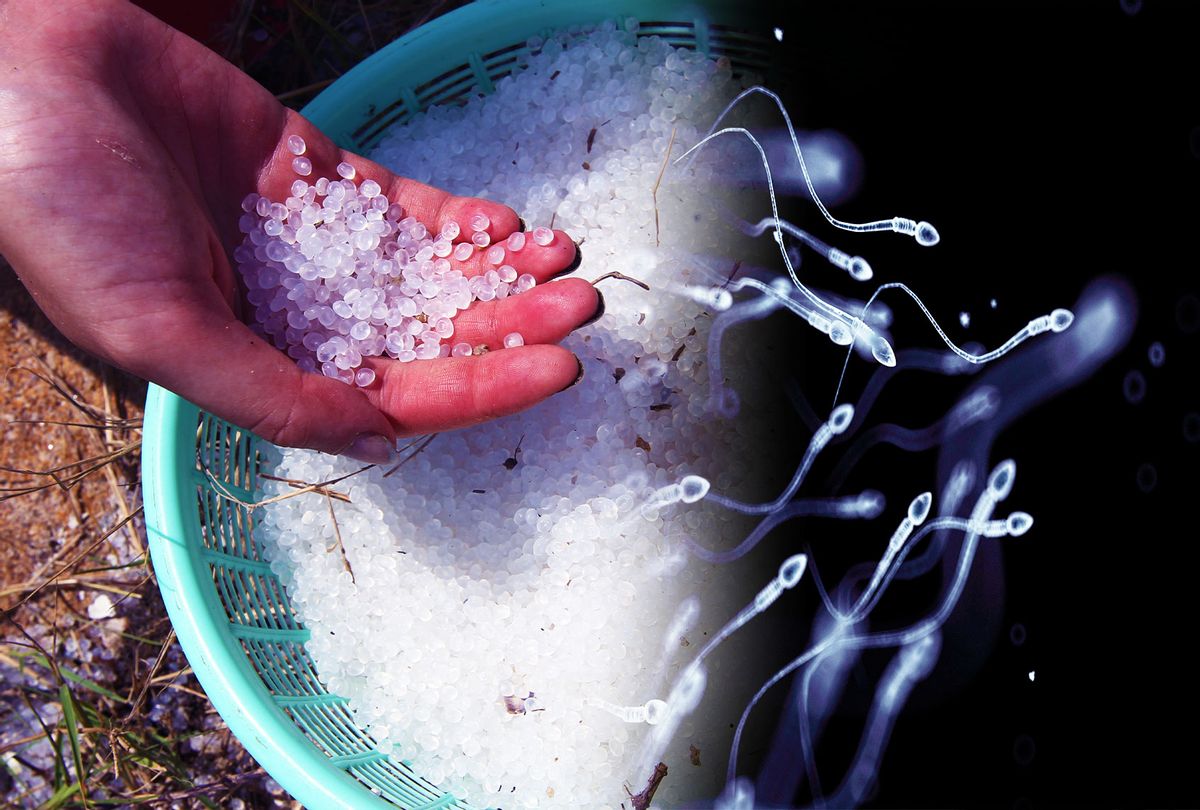When the Alabama Supreme Court ruled that frozen embryos from in vitro fertilization procedures are “extrauterine children,” the right-wing jurists controversially put a halt to IVF procedures all over the state. But one thing that may have been overlooked in the debate is how we could rely more on these technologies to have children in the future, thanks to both climate change and the proliferation of toxins in the environment.
While IVF access may seem completely unrelated to climate change, experts believe that as the planet’s temperature continues to rise, humans may experience an infertility crisis as a result.
“Increases in ambient temperature (e.g. through global warming) may decrease semen quality.”
Shanna Swan, an environmental and reproductive epidemiologist at the Icahn School of Medicine at Mount Sinai, wrote a book on how human sperm counts have plummeted over the past half century, appropriately titled “Count Down: How Our Modern World Is Threatening Sperm Counts, Altering Male and Female Reproductive Development, and Imperiling the Future of the Human Race.”
The book reviews how from 1973 to 2011 sperm concentration dropped from 99 million per milliliter to 47 million per milliliter, with 15 million per milliliter being the threshold before a man is declared infertile. This is at least in part due to humanity’s overuse of endocrine disruptors, or chemicals like those in plastics which interfere with our hormonal systems.
Yet as Swan wrote to Salon, climate change is also a probable factor.
“High scrotal temperatures have been associated with decreased sperm count and motility, so increases in ambient temperature (e.g. through global warming) may decrease semen quality,” Swan explained. “Also increased temperatures, particularly in regions with extreme heat, can lead to heat stress, which can negatively affect sperm production and quality. In addition, consequences of global warming, such as food insecurity, natural disasters, and economic instability, can contribute to chronic stress which negatively affects semen quality, reproductive hormones and fertility.”
Swan added, “Separating the causal from the correlative is extremely difficult, as you know!”
Ravindran Jegasothy, a professor of medicine at MAHSA University in Kuala Lumpur who studies climate change and fertility in Malaysia, said that a number of factors are causing rising infertility rates among both sexes. These include the aforementioned chemical pollution as well as lifestyle factors such as drug abuse and obesity. Yet basic biology dictates that, because humans rely on specific temperatures to reproduce, rising planetary temperatures might interfere with humanity’s collective reproductive health.
“Climate change, particularly rising temperatures, impacts fertility in both males and females,” Jegasothy explained. “For men, it affects sperm quality, motility [ability to move], and morphology [shape] due to increased scrotal temperatures. In women, it influences ovarian functions, oocyte quality, and pregnancy outcomes.” Because these negative effects are mainly attributed to “physiological stress, oxidative stress and disruptions in the endocrine system,” it indicates that heat stress may cause reproductive health impairments.
Want more health and science stories in your inbox? Subscribe to Salon’s weekly newsletter Lab Notes.
“Climate change, particularly rising temperatures, impacts fertility in both males and females.”
Luca De Toni, a professor of medicine at the University of Padova who has studied global warming and testicular function, told Salon by email that on a fundamental level, testicle function is related to organ temperature. “In humans, differently from other animal species and lower mammalians, testis are located outside of the abdomen. This contributes to the maintenance of an organ temperature 2º to 4° C below core body temperature.”
As a consequence, if human testes are regularly and directly exposed to heat sources whether due to one’s occupation (such as if you’re a cook or a blacksmith) or one’s health (having conditions like obesity or a varicocele), sperm quality and quantity will drop. “In spite of an individual variability of these effects, they are rather generalizable,” De Toni said.
For people who are trying to conceive, Amelia Wesselink, an epidemiologist at Boston University’s Institute for Global Sustainability, said people may find it fruitful to make efforts to reduce their heat exposure, such as limiting time outdoors during heat waves.
“Of course, this burden should not rest solely on individuals — we need structural level interventions and policies to protect people from heat, given all we know about the health effects of extreme heat exposure,” Wesselink, who has written about climate change and reproductive health, told Salon in an email. “We also need to raise awareness among reproductive endocrinologists, urologists, and other doctors who treat couples trying to conceive so that they can ask their patients about environmental exposures, including heat, that could be affecting their fertility.”
Jegasothy suggested that people trying to conceive should consider “medical interventions to address specific fertility problems, lifestyle changes to reduce exposure to heat and pollutants, and public health measures to improve overall health and reduce the impact of climate-related diseases.” Of course, this is easier said than done for many: “Access to these treatments varies by region and is dependent on healthcare infrastructure, public health policies and individual circumstances.”
And, of course, there is always IVF. If it turns out that climate change on its own is causing widespread infertility, then it is entirely possible humanity’s inability to rein in its use of fossil fuels will force societies to make difficult choices. As Swan pointed out, various nations handle this problem in different ways.
“The fertility issue, on a national level, appears nearly intractable,” Swan explained. “South Korea, Singapore, China, etc. have tried for years to turn around these decreasing trends with economic incentives and other measures. These rates continue to decline! In Israel, where assisted reproduction is paid for, fertility rates have not declined.”
In other words, IVF could be one tool that humans use to deal with their fertility issues as climate change gets worse — but, as Swan noted, there is a catch: “This is a solution when it is economically feasible,” Swan said.
Read more
about climate change:

